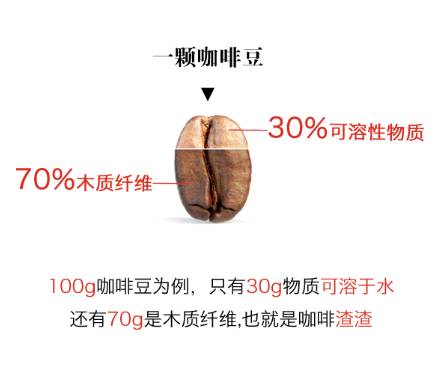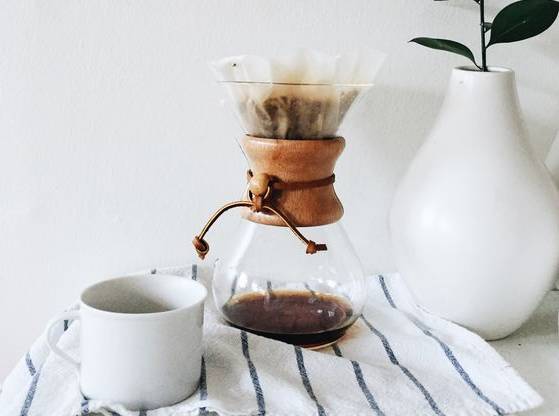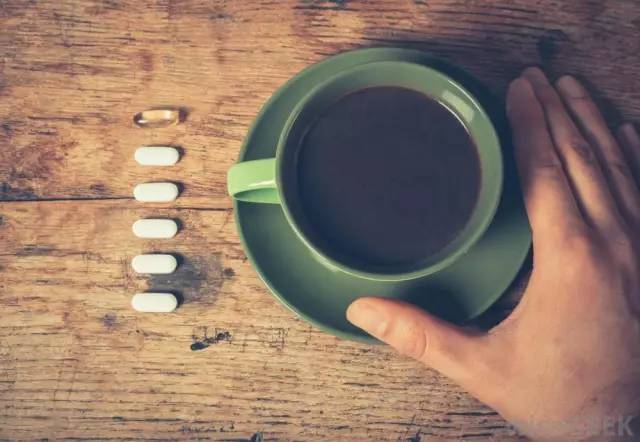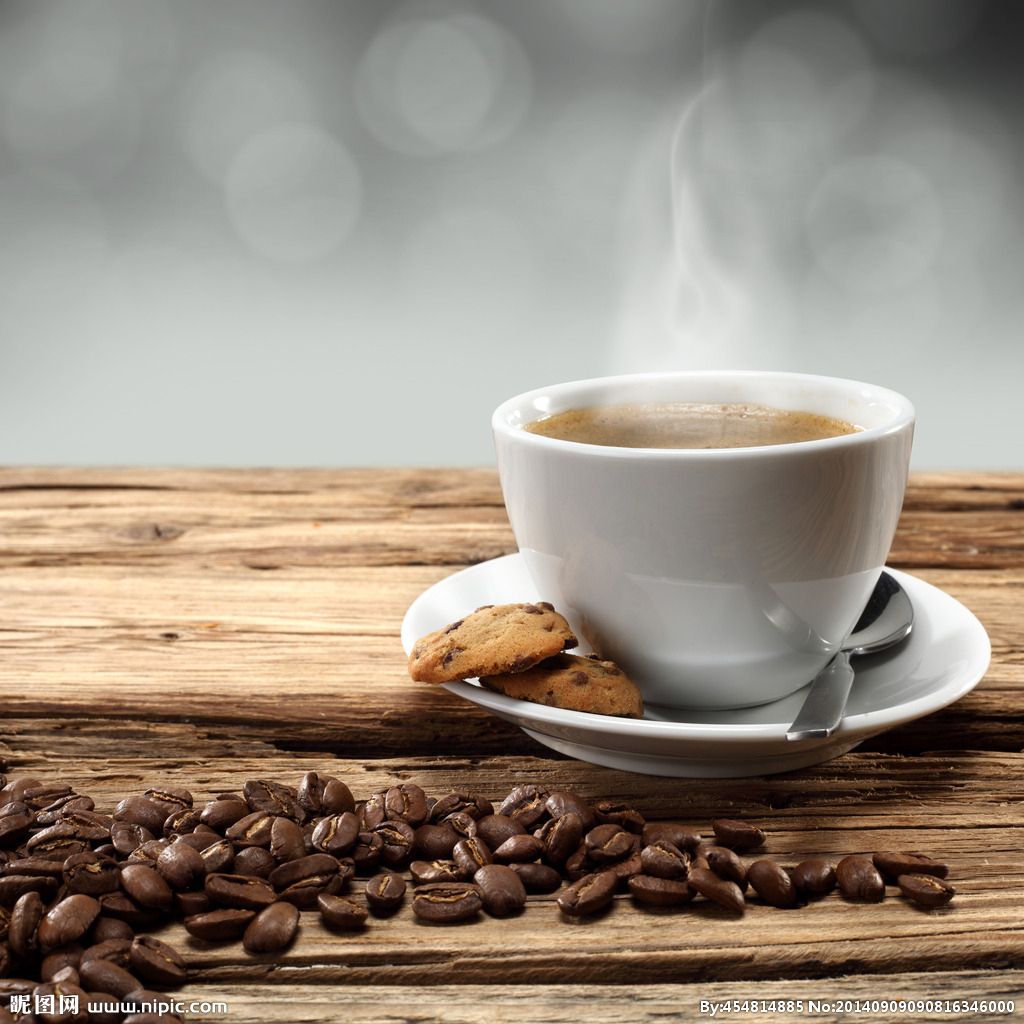Share the secret of making coffee by hand.
Pay attention to coffee reviews (Weixin Official Accounts vdailycom ) and find a beautiful cafe to open your own shop
For brewed coffee, the gold cup extraction criteria determine whether the coffee liquor tastes good. The extraction rate and concentration are the two main principles of gold cup extraction criterion. The two affect each other's taste spectrum and intensity, and how should coffee fans practice and apply it to the brewing experience?
Reveal the secret of coffee flavor spectrum
Coffee powder is too fine or too coarse, the water temperature is too high or too low, the extraction time is too long or too short, and the brewing ratio is different, all of which will affect the extraction rate of coffee powder and the amount of flavor incorporated into the coffee liquid, thus affecting the flavor spectrum and intensity.
Scientists have found that extraction rates and concentrations must be within a certain range for coffee to taste good, and quantitative data have been developed to interpret coffee's abstract flavor.

1 Extraction rate: determines the quality of the flavor spectrum
Dr. Lockhart's research shows that 70% of coffee cooked beans are insoluble in water fiber, soluble flavor only accounts for 30% of the weight of cooked beans, according to European and American people try to drink results, coffee powder extraction rate of 18-22%, the most delicious coffee, that is, the so-called "gold extraction rate interval."
The flavor extracted during brewing coffee is too much. If you extract all the soluble flavors that account for 30% of the bean weight, you will definitely extract too much, and you will have a bitter, sour and salty taste.
If only less than 18% of soluble flavor is extracted, it is insufficient extraction, prone to inactive dead acid and half-cooked grain flavor and green, so that taste buds uncomfortable.
Therefore, if the extraction rate is too high or too low, it means that too much or too little flavor extracted from the brewed coffee will affect the taste of the coffee. If the extraction rate is lower than 18%, it is easy to have dead acid, grain and green taste; if it exceeds 22%, it will have bitter, sour and salty taste; only when the gold extraction rate is within the range of 18-22%, coffee dissolves high quality flavor, but also inhibits the release of inferior flavor, and the flavor balance can be made into delicious coffee.
2 Concentration: determines the strength of flavor
Even if it hits the gold extraction rate range of 18%--20%, it only completes one half of the "Golden Cup Rule", and it must hit the delicious range of concentration to achieve the realm of the Golden Cup Rule.
The standard quality flavor extracted from coffee powder must be diluted with the appropriate amount of water to make a delicious coffee. If the amount of diluted water is too small, the taste is too strong, but the mouth is blocked; if the amount of diluted water is too much, the taste is too weak, and the fun of tasting coffee is lost.
Concentration, simply put, is the ratio of coffee extract to water in a cup of coffee. Therefore, the ratio of water and coffee powder is the core factor in determining concentration. People in different regions have different requirements for coffee concentration, but there is still a certain range for reference, that is, between 1.15% and 1.55%. The ratio of water to coffee powder is 16:1. 160ml of water requires 10 grams of powder.
Concentration problem, that is, the proportion of water and coffee powder needs to be grasped in practice.
3. Problems to be paid attention to when reaching the "Golden Cup Interval"
During the brewing process, brewing water temperature, extraction time, stirring force and baking degree are directly proportional to the extraction rate. However, the amount of coffee powder and the fineness of coffee powder are inversely proportional to the extraction rate.
In other words, the higher the water temperature, the longer the brewing time, the greater the stirring intensity, the deeper the roasting degree, the easier it is to pull up the extraction rate, and the more likely it is to cause excessive, but the more coffee powder, the coarser the grinding degree, the less easy it is to extract, and it is easy to cause insufficient extraction.

To brew a good cup of coffee according to SCAE, the control factors include the following five criteria:
Extraction time: Contact time
In order to obtain 18~22% extraction rate in the best extraction time, it is important to control the grinding degree and water temperature of coffee.
Temperature of the water
92°C~96°C to start brewing water temperature is necessary to master, too high or too low initial water temperature may be inappropriate.
Coffee powder disturbed during brewing: Turbulence
Disturbance is necessary to achieve the extraction rate, such as stirring with wind, flushing water column strength, etc.
Soak coffee powder Wettability: Hand brewed,espresso, American There is a wetting stage before brewing. The amount of wetting water in this stage is 2ml of water per gram of coffee powder, and the soaking time is about 30sec. Of course, the roasting state of coffee beans has different pre-soaked wet states, and this part of hand washing can be well controlled.
Uniform Dispersion: The brewing process allows water to pass evenly through each coffee powder, while the water temperature is consistent from the beginning to the end. Water extraction is important. For example, espresso emphasizes that the brewing water temperature and pressure are consistent.
Brewing Reference
1 degree of grinding
Law Press Kettle:
Each coffee is ground into 100 to 300 coffee powders, about 0.7mm in diameter, which is about the size of the second special sugar particle.
Drip filtration:
Each coffee is ground into 500 to 800 coffee powders, about 0.5mm in diameter, that is, about the size of coffee with sugar particles.
Siphon:
Each coffee is ground into 1000~3000 coffee powders, about 0.35mm in diameter, that is, about the size of food refined salt particles.
Espresson:
Each coffee is ground into 3500 coffee powders, about 0.05mm in diameter, that is, about the size of flour particles.
2 Cooking time
Wetting phase:
At this point, add hot water to the coffee powder to moisten the coffee and let the coffee extract dissolve. The amount of water to moisten is about twice the amount of coffee powder. The soaking time is about 30sce.
Water Cycle:
At this time, depending on the thickness of the coffee powder, water is allowed to contact the coffee powder for different times, and the coffee extract is dissolved.
a. Method pressing: coarse powder, soaking for 3~5min
b. Dropping Follicle: The brewing process is about 1~3 minutes
c.Syphon: brewing process about 40~60sec
d.espresso: 30 second extract 30cc espresso
After extraction:
At this time, coffee has extracted more than 50% of extractables, that is, 60~70% of coffee soluble extract is extracted as the optimum extraction and adjust the water volume to achieve the optimum coffee concentration between 1.0~1.5%.
Coffee grounds after extraction:
The water content of coffee grounds is about twice that of the original coffee powder (hand-brewed follicular type).
Important Notice :
前街咖啡 FrontStreet Coffee has moved to new addredd:
FrontStreet Coffee Address: 315,Donghua East Road,GuangZhou
Tel:020 38364473
- Prev

The interaction between coffee and antihypertensive drugs: the growth and decline of each other?
There is no support or objection in the hypertension guidelines on whether you can drink coffee while taking antihypertensive drugs. A recent meta-analysis indicated that the short-term pressor effect of caffeine may reduce the efficacy of antihypertensive drugs and called for formal research to explore the interaction between coffee and specific antihypertensive drugs in order to clearly recommend them in the guidelines. This is the Canadian scholar David G. Bailey and his
- Next

Regular consumption of coffee and herbal tea can reduce liver cirrhosis
Following caf é comments (official Wechat account vdailycom) found that Beautiful Cafe opened a small shop of its own in June 2017. the results of a study published in Journal ofHepatology magazine showed that regular consumption of coffee and herbal tea by ordinary people could reduce liver cirrhosis. The volunteers who participated in the trial received transient elastography (transientelastography) and ultrasound examination of the liver.
Related
- Being chased out of the rain in front of Starbucks?! Store: Sheltering from rain under umbrellas poses a safety hazard
- The white moonlight has changed?! Lucky launches "Big Winter Pear American"
- Hand-brewed coffee three-stage method, high-sweet and universal brewing method to share! What does the high sweet water level of hand-brewed coffee mean?
- What is the difference between raw, refined and full espresso coffee? How to extract espresso and taste good?
- A complete list of coffee bean names and their meanings! What is Yejia Shefi coffee? Where is Mantelin coffee?
- What grade does Arida Manor Kaduai coffee beans belong to? What treatment is Arida ASD slow anaerobic sun exposure?
- The milk tea cup becomes smaller?! Overlord Tea Girl launches a new "Return to Yunnan" series
- Accused of selling counterfeit and high-priced coffee beans! Well-known boutique coffee brand "Oukelao" bowed and apologized!
- How to make espresso dumplings? Can I eat coffee and glutinous rice balls together?
- Save the unformed and stagnant powder cakes in one second! What is the problem with stagnant water in the powder bowl of the espresso machine?

